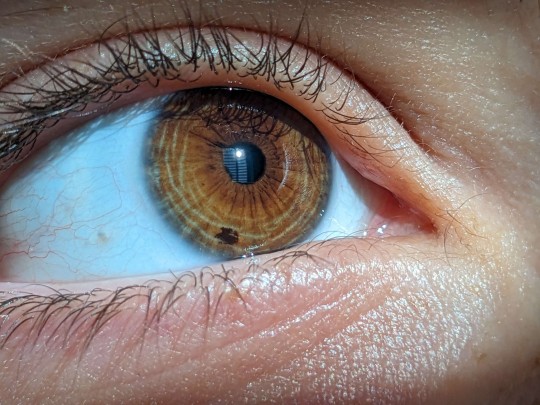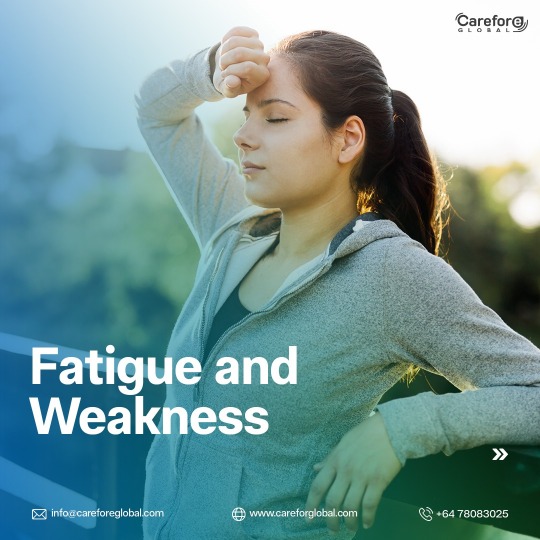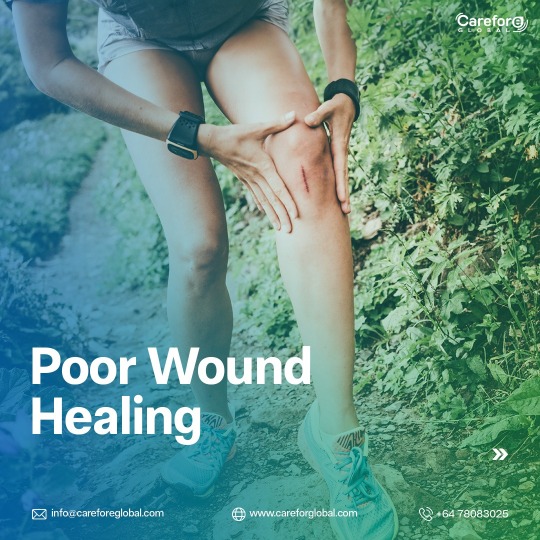#deficiency signs
Text
i say this as someone with an ADHD diagnosis, but if you find that one of the biggest struggles you face is executive dysfunction... but you also have a history of complex trauma... consider that it might not just be the ADHD, but that you are stuck in a state of chronic freeze response.
#not trying to invalidate or dismiss peoples experiences#but we've been trying to treat the adhd for me. the executive dysfunction. it has not worked.#the only things that have helped me make progress are trauma treatments#'everyone has ADHD these days'#part of this is because more people know about it#but i genuinely wonder how much of it is just the complex trauma so many of us experience from the absolutely fucked society#that we currently live in#from abusive family - that many people don't even know the signs of#to systemic oppression like#how many of us are actually experiencing dopamine deficiency and how many people got cyberbullied too many times as a teen#look outside and see a genocide going on funded by our tax dollars and go#i cannot do my fucking dishes why can't i do my dishes clearly I have a disorder#idk#maybe it's a completely justified trauma response#food for thought#adhd#cptsd
11 notes
·
View notes
Text

cool picture of my eye my bf took. everyone please clap for my eye freckle
#personal#this is cringe but i dont have friends to show lol#apparently the green circles are copper deposits and are likely signs of an underlying deficiency#that might cause kidney issues later. yoikes
3 notes
·
View notes
Text
my hospital switched to a system where i can see a lot of the data they hold for me online and it's actually very funny because i can see where they completely lied about my height and said i was five foot seven but then put my weight as it actually is, skewing my BMI massively, and then it just goes back to normal and nobody ever mentioned it again
#also apparently i'm back down to five foot three again now#which is a great sign that my back is even more fucked up than usual#personal#but seriously why did they claim i was 1.71m that one time#i am also the heaviest i have been since 2015 supposedly which. tracks. probably#and yet i am so very nutrient deficient#funny how that works
9 notes
·
View notes
Text
my ninth-grade research paper on the science of stress, depression, and anxiety is really coming back to kick me in the butt right now
#i think i might have depression as a result of the stress i’m under#like. it’s just constant stress for me ALL THE TIME#i don’t really ever feel like i can relax & when i do sit down to read or something i feel like i should be doing more#i’m exhausted all the time too#and i didn’t really notice it but i’ve lost a lot of creative drive (i just chalked it up to being busy)#there are lots of other signs too#idk it could be other health problems as well but?? my mom has been making sure i eat healthy for a while so?? maybe i have an iron defici#deficiency#but anyway. stress definitely has something to do with it all#belle speaks
2 notes
·
View notes
Text
You sleep for 4 hours, I'm awake for 4 hours we are not the same
3 notes
·
View notes
Text
spent 2 hours napping in a blood clinic waiting room this morning
#got all the results back this afternoon and they're all normal#according to these tests i'm actually like the healthiest i've ever been#no longer iron deficient! great B12! no active immune response! so tell me why i've been in a steady physical decline for 3 years 🤨#pegasus speaks#so fucking ... UGH !!!! Ugh !!!!!!!!!!!!! just make it something simple and fixable !!!!!#also i was just thinking abt getting a tattoo and some local artist messaged me out of the blue and . gotta say y'all it feels like a sign
5 notes
·
View notes
Text
Guess who got booked for surprise bloodwork tomorrow at 9 am on account of I’ve been running low-grade fevers for a solid month. Do you think they will add a cheeky vitamin E test if I ask because it would be hysterically funny if I just had a vitamin deficiency, albeit an extremely rare one that is usually caused by an underlying metabolic disorder anyway
#vitamin E deficiency causes spinocerebellar ataxia comma neuropathy comma literally all my skin problems comma#muscle weakness comma vision problems comma#and positive babinksi sign!!!
12 notes
·
View notes
Text
I'm just like goats : I really do crave that mineral.
#I want some salty cheese I want cheese I want real cheese#Mimolette / pesto gouda / Wasabi gouda / regular gouda /…#I am HUNGRY and I want CHEESE#I'm sure it's the sign of some deficiency of something as it usually is but still I want CHEESE#Salty cheese goddammit ❢ 😭#berry rambles
4 notes
·
View notes
Text

they rly spent half an ep arguing about whether or not charlie’s an artist and then his stuff looks like this?? i want that left one sooo badly
#someone does need to get him some vitamins tho cause i'm pretty sure eating chalk is a sign of a deficiency#when i see art like this in shows i'm always curious who made it irl#also frank basically dressing up as andy warhol killed me#iasip watch tag#also this show sure loves throwing in fucked up little backstory details that explain a lot huh#like... i honestly spent that entire speech wishing i could reach through the screen and tell dennis it's ok to admit he has trauma#adding this to the list of analysis topics that'll stay in my drafts forever
5 notes
·
View notes
Text
i think if everyone had a cat to cuddle with they all might just be a bit nicer
#signed fawn#they are warm and they purr#i think thats why ppl are evil bc theyre cat deficient OR cats hate them#/lh ofc
1 note
·
View note
Text
B12-Deficiency - Causes, Symptoms And Treatments
Vitamin B12 deficiency: What it is, symptoms, causes, treatments, and prevention tips. Read the blog for the information you need to maintain optimal health.
#treatment-for-b12-deficiency#symptoms-of-b12-deficiency#what-is-b12-deficiency#causes-of-b12-deficiency#signs-of-b12-deficiency
0 notes
Text
SIGNS OF VITAMIN C DEFICIENCY AND DIET #shorts #health #vitaminc #viral
0 notes
Text







#Carefore global#Nutrient Deficiency#Vitamin Deficiency#Mineral Deficiency#Health Warning#Fatigue Signs
0 notes
Text
*in the depths of another mental breakdown* maybe i should redownload tiktok
#i think the desire to dl tiktok is a warning sign that I'm deficient in something#i crave short form content bc i need like. dopamine or something.#the only times i ever desire tiktok is when I'm in the middle of or about to go into a depressive episode
1 note
·
View note
Text
I forget why, but I was on the Wikipedia page for polycystic ovarian syndrome, and I started researching hirsutism in women, and I learned the following things in this order:
there's a diagnostic criteria used to evaluate how hairy a woman is
This is important because being too hairy is a diagnostic criteria of most disorders that cause hyperandrogenism
Disorders that cause hyperandrogenism can be diagnosed by...measuring how hairy you are (this is the main and most important diagnostic criterion for PCOS)
Disorders that cause hyperandrogenism are important because they are correlated with obesity, infertility, and...being too hairy?
I think to myself, wait, what is a normal range for testosterone in women? I find this article...which set reference ranges for "normal" testosterone levels in women...EXCLUDING WOMEN WITH PCOS?
Quote: "Polycystic ovary syndrome (PCOS) is another notable condition in genetic (XX) females, which is characterized by excessive ovarian production of androgens. This condition is included for comparison with DSD, as the affected females with PCOS are genetic and phenotypic females. The elevated levels of testosterone in these females can lead to hyperandrogenism, a clinical disorder characterized variably by hirsutism, acne, male-pattern balding, metabolic disturbances, impaired ovulation and infertility. PCOS is a common condition, affecting 7%-10% of premenopausal women."
So: the study claims to demonstrate a clear distinction between the normal range of hormone levels in "Healthy" men and "healthy" women...with "healthy" being defined in the study as...having hormones within the "normal" range.......................
So I researched what the clinically established "normal" range for testosterone in women is
THERE ISN'T ONE????
Quote from the above article: "Several different approaches have been used to define endocrine disorders. The statistical approach establishes the lower and the upper limits of hormone concentrations solely on the basis of the statistical distribution of hormone levels in a healthy reference population. As an illustration, hypo- and hypercalcemia have been defined on the basis of the statistical distribution of serum calcium concentrations. Using this approach, androgen deficiency could be defined as the occurrence of serum testosterone levels that are below the 97.5th percentile of testosterone levels in healthy population of young men. A second approach is to use a threshold hormone concentration below or above which there is high risk of developing adverse health outcomes. This approach has been used to define osteoporosis and hypercholesterolemia. However, we do not know with certainty the thresholds of testosterone levels which are associated with adverse health outcomes."
What the fuck?
What the fuck?
It's batshit crazy to make a diagnostic criteria for medical disorders by placing arbitrary cutoffs within 2-5% of either end of a statistical distribution. What the actual fuck?
"The results came back, you have Statistical Outlier Disease." "What treatments are available?" "Well, first, we recommend dietary change. You should probably stop eating so many spiders."
Another article which attempted to do this
Quote: "Subjects with signs of hirsutism or with a personal history of diabetes or hypertension, or a family history of polycystic ovarian syndrome (PCOS) were excluded."
"We're going to figure out the typical range of testosterone levels that occur in women! First, we're going to exclude all the women that are too hairy from the study. I am very good at science."
Anyway I got off topic but there are apparently race-specific diagnostic tools for "hirsutism." That's kinda weird on its own but when I looked more into this in relation to race I found this article that straight-up uses the term "mongoloid"
19K notes
·
View notes
Text
Vitamin D deficiency: Don't ignore these warning signs

Vitamin D is an essential nutrient that plays a crucial role in maintaining overall health and well-being. However, despite its importance, many people around the world are not getting enough of this vitamin. This can lead to a deficiency, which can have serious consequences if left untreated. But how do you tell if you have a vitamin D deficiency? Identifying early symptoms is crucial in preventing potential health issues. In this blog post, we will discuss the warning signs that may indicate a deficiency in vitamin D and how to address it before it's too late.
Understanding Vitamin D and Its Importance
Vitamin D is a fat-soluble vitamin that is essential for numerous bodily functions. It plays a crucial role in maintaining strong bones and teeth, as it helps the body absorb calcium and phosphorus from the diet. In addition to its role in bone health, vitamin D is also important for a healthy immune system and proper muscle function.
The main source of vitamin D is sunlight. When your skin is exposed to the sun's UV rays, it produces vitamin D. However, factors such as geographical location, time of year, and skin color can affect how much vitamin D your body is able to produce. This is why many people rely on dietary sources, such as fatty fish, fortified dairy products, and supplements, to meet their vitamin D needs.
Deficiency in vitamin D can lead to a range of health issues. In children, it can cause rickets, a condition characterized by weak and soft bones. In adults, a deficiency can increase the risk of osteoporosis, a condition that weakens the bones and makes them more prone to fractures. Vitamin D deficiency has also been linked to an increased risk of autoimmune diseases, certain types of cancer, and cardiovascular disease.
Understanding the importance of vitamin D is essential in ensuring optimal health. By maintaining adequate levels of this vitamin, you can support bone health, boost your immune system, and lower your risk of developing various chronic diseases. In the next sections, we will explore the causes, warning signs, and treatment options for vitamin D deficiency.
Uncovering the Causes of Vitamin D Deficiency
Vitamin D deficiency can occur for a variety of reasons. One of the main causes is a lack of sunlight exposure. As mentioned earlier, sunlight is the primary source of vitamin D, and when your skin is exposed to the sun's UV rays, it triggers the production of this essential nutrient. However, factors such as living in a northern latitude, spending most of your time indoors, or wearing sunscreen can hinder this natural process and lead to a deficiency.
Another common cause of vitamin D deficiency is a lack of dietary intake. While sunlight is the main source, certain foods also contain vitamin D. Fatty fish like salmon and mackerel, fortified dairy products, and eggs are examples of dietary sources. However, if your diet does not include these foods regularly, you may not be getting enough vitamin D from your meals.
Certain health conditions can also contribute to a vitamin D deficiency. Digestive disorders, such as Crohn's disease or celiac disease, can affect the absorption of vitamin D from the diet. Additionally, obesity and certain medications, such as glucocorticoids or anticonvulsants, can interfere with vitamin D metabolism and result in lower levels.
Lastly, aging can also play a role in vitamin D deficiency. As we get older, our skin becomes less efficient at producing vitamin D, and our kidneys may have a reduced ability to convert vitamin D into its active form. This can lead to lower levels of vitamin D in the body.
Understanding the various causes of vitamin D deficiency is crucial in addressing the issue and preventing further complications. By identifying the underlying factors, you can take the necessary steps to improve your vitamin D levels and ensure optimal health.
Recognizing the Warning Signs of Vitamin D Deficiency
While a vitamin D deficiency may not always show obvious symptoms, there are certain warning signs that you should be aware of. Paying attention to these signs can help you identify a potential deficiency and take necessary action to address it.
One of the most common signs of vitamin D deficiency is fatigue or excessive tiredness. If you find yourself feeling exhausted even after getting enough sleep, it could be a result of low vitamin D levels. Another warning sign to look out for is frequent illness or infections. Vitamin D plays a vital role in supporting a healthy immune system, so a deficiency can weaken your body's defenses against infections.
Muscle weakness and bone pain can also be indicators of a vitamin D deficiency. Since this vitamin is crucial for maintaining strong bones and muscles, a lack of it can result in discomfort and weakness. Additionally, depression and mood swings have been linked to low vitamin D levels. Studies have found that people with vitamin D deficiencies are more prone to experiencing symptoms of depression.
If you notice any of these warning signs, it is important to consult with a healthcare professional. They can perform a blood test to check your vitamin D levels and recommend appropriate treatment if a deficiency is detected.
In the next section, we will discuss the diagnosis and treatment options for vitamin D deficiency, so stay tuned for more information on how to address this issue and improve your overall health.
Diagnosing and Treating Vitamin D Deficiency
Diagnosing and treating vitamin D deficiency is crucial in order to address the issue and improve overall health. The first step in the diagnosis process is to consult with a healthcare professional. They will conduct a blood test to measure your vitamin D levels. This test, known as a 25-hydroxyvitamin D blood test, is the most accurate way to determine if you have a deficiency.
Once the results are in, your healthcare professional will discuss the best course of treatment for your specific situation. Treatment options for vitamin D deficiency typically involve increasing your vitamin D intake through a combination of sunlight exposure, dietary changes, and supplementation.
If sunlight exposure is limited, your healthcare professional may recommend spending more time outdoors or using artificial ultraviolet (UV) light therapy. In terms of dietary changes, they may advise incorporating more vitamin D-rich foods into your diet, such as fatty fish, fortified dairy products, and eggs. If dietary changes are not enough, they may recommend vitamin D supplements to ensure you are getting enough of this essential nutrient.
It is important to follow your healthcare professional's guidance and regularly monitor your vitamin D levels to ensure they are within the optimal range. With proper diagnosis and treatment, you can effectively address a vitamin D deficiency and improve your overall health and well-being.
Lifestyle Changes to Improve Vitamin D Levels
Making lifestyle changes can be a great way to improve your vitamin D levels and support overall health. Here are some practical steps you can take to increase your vitamin D intake:
1. Spend time outdoors: One of the best ways to boost your vitamin D levels is by getting regular exposure to sunlight. Aim for around 15-30 minutes of direct sunlight on your face, arms, and legs a few times a week. However, be mindful of the sun's harmful rays and take precautions to protect your skin, such as using sunscreen or seeking shade during peak hours.
2. Adjust your diet: Incorporating vitamin D-rich foods into your diet can also help improve your levels. Fatty fish like salmon, mackerel, and sardines are excellent sources of vitamin D. You can also include fortified dairy products like milk and yogurt, as well as eggs, in your meals. Consider adding these foods to your shopping list to ensure you're getting enough vitamin D from your diet.
3. Consider supplements: If sunlight exposure and dietary changes aren't enough, your healthcare professional may recommend vitamin D supplements. These can be an effective way to boost your levels, especially if you have a severe deficiency. However, it's important to follow your healthcare professional's guidance and take the recommended dosage.
4. Get regular exercise: Engaging in regular physical activity has been shown to support vitamin D metabolism and absorption. Incorporating activities like walking, jogging, or cycling into your routine can not only help you get some sunlight exposure but also promote overall health and well-being.
Remember, it's important to consult with a healthcare professional before making any significant lifestyle changes or starting any new supplements. They can provide personalized recommendations based on your specific needs and ensure that you're on the right track to improving your vitamin D levels.
#vitamin c deficiency#vitamin c#vitamin c deficiency symptoms#deficiency of vitamin c#signs of vitamin c deficiency#vitamin c benefits#symptoms of vitamin c deficiency#vitamin c deficiency teeth#vitamin c foods#vitamin c deficiency symptoms skin#vitamin c deficiency signs#vitamin c deficiency causes#vitamin c deficiency scurvy#vitamin c deficiency diseases#vitamin deficiency#vitamin c deficiency skin#benefits of vitamin c#ascorbic acid vitamin c
0 notes